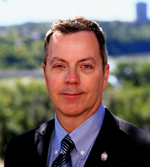 The difficulties of attracting and retaining the health workforce to non-metropolitan areas have been well-documented, and authorities throughout the world have introduced a range of initiatives as countermeasures.
The difficulties of attracting and retaining the health workforce to non-metropolitan areas have been well-documented, and authorities throughout the world have introduced a range of initiatives as countermeasures.
Within Canada we have focused almost exclusively on increasing the supply of physicians, both through expanding medical school and residency seats, and the active recruitment of physicians trained outside of Canada. During the period 2009 to 2014, Alberta increased the number of physicians per 100,000 population by 11.66 per cent; and by six per cent in rural areas.
Although increasing physician numbers is important, no country has yet to produce (nor could it likely afford to produce) sufficient numbers of generalist physicians to meet the perceived health care needs of its citizens.
Efforts by RPAP | Health Workforce for Alberta and other organizations to increase physician numbers within the province occur within the following context:
- Available health professionals are not distributed to the areas of need, nor working to their full scope of practice.
- Even with the expansion of training programs in Alberta, its non-metropolitan areas will continue to rely disproportionately on an internationally educated health workforce into the near future.
- Health care delivery in non-metropolitan community settings continues to foster multidisciplinary generalist practice[1] (although this is threatened).
- Work / life balance issues can affect the recruitment and retention of health practitioners.
- The “community” can play a role in the attraction & retention of health practitioners.
- Canadian and international experience demonstrates that patient attachment and the involvement of primary health care teams can lower costs and minimize physician visits, versus episodic treatment which has higher cost and poorer outcomes.
A number of jurisdictions are doing a better job of providing reliable, sustainable and predictable access to health care services. This means access to the right healthcare provider at the right time, and this is not always a physician.
So how do we put in place better measures of distributing and organizing the healthcare workforce to areas of need within Alberta?
Well, we could start with these measures:
- Expand the Alberta Rural Family Medicine Network (ARFMN) training schemes through RPAP and its partners, the two provincial family medicine departments. Unlike urban trained resident physicians, Rural Alberta North (RAN) and Rural Alberta South (RAS) residents are seven times more likely to choose to settle in rural Alberta in general; and eight times more likely to settle in communities outside of a defined urban, exurban or regional area. (See www.rpap.ab.cahttps://rhpap.ca/wp-content/uploads/media/60979/choosing-the-rural-route-rpap-november-15-14.pdf)
- Support the recent changes by the College of Physicians & Surgeons of Alberta (CPSA) Council to the sponsorship of physicians requiring a practice readiness assessment as a condition of obtaining a license to practice (see http://tinyurl.com/nzd7s26)
- Change the regulatory regime to require practitioner attachment to the health care system. i.e. formal relationship and accountabilities to community primary care structures and/ or AHS medical staff membership. All health care providers need to be linked together into communities of practice, either through affiliation to health care facilities or to the community primary care system, so that they are supported and held accountable to provide needed services to the health care system for the benefit of their patients.
As the Canadian Centre for Healthcare Improvement (CFHI) said in its May 2012 Mythbuster article “Myth: Canada Needs More Doctors”:
“The current surge in physician supply could do little more than add to costs if the twin challenges of unequal physician distribution and improving efficiency of delivery of care through multi-professional teams aren’t met. Improving access to, and efficiency of, primary healthcare is a complex problem that requires creative approaches to the organization and delivery of care. There are places in the country that need more doctors, but simply cranking up supply will not fill those gaps. The problem isn’t a shortage of doctors, but rather how and where the skills of those doctors are being used.”
[1] Cairns Consensus Statement on Rural Generalist Medicine, World Summit on Rural Generalist Medicine, 22 May 2013.
